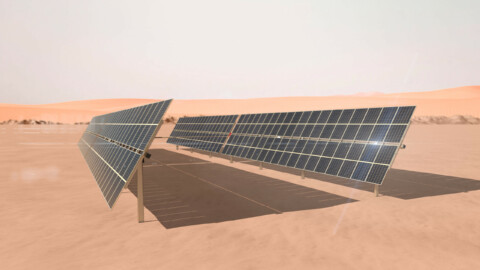The Australian Renewable Energy Agency (ARENA) has announced $13.7 million in funding to support a front-end engineering and design (FEED) study that will include the development of a large-scale renewable hydrogen production facility at Brisbane’s Gibson Island.
The announcement was made on behalf of the Federal Government and detailed that the funds will be given to Fortescue Future Industries Pty Ltd (FFI) in partnership with Incitec Pivot Limited (IPL) and will involve conversion of IPL’s existing Gibson Island ammonia plant to utilise 100 per cent renewable hydrogen produced by the hydrogen facility.
FFI (a wholly owned subsidiary for Fortescue Metals Group (FMG)) and IPL’s $38 million project looks to investigate the deployment of a 500MW electrolyser, capable of producing up to 70,000t of renewable hydrogen per year.
The study will also consider the conversion requirements for IPL’s existing ammonia plant to utilise the renewable hydrogen production and offtake approximately 400,000t of renewable ammonia per year.
If successful, the electrolyser will be one of the largest in the world, feeding renewable hydrogen into the first fully decarbonised renewable ammonia facility.
ARENA CEO, Darren Miller, said the project would significantly accelerate the development of a renewable ammonia industry in Australia.
“Having the ability to reutilise ageing assets and repurposing them to use renewable energy will not only help to keep costs down in the future, but also ensure skilled workers are retained as we continue our transition to net-zero emissions,” Mr Miller said.
The study will also generate important information for the industry, developing benchmarks for the economics of large scale renewable hydrogen and ammonia production in Australia, and improving the understanding of the technical and commercial feasibility of large-scale electrolyser deployments.
The study will also provide insights into the feasibility of converting existing ammonia production facilities to utilise renewable hydrogen, and help to further understand the market for renewable ammonia in Australia and internationally.
Ammonia production is a highly energy intensive process, producing about 500 million tonnes annually of carbon dioxide, which is around 1.8 per cent of global carbon emissions – a figure similar in scale to the aviation industry.
Ammonia is used in agriculture and industry, with up to 80 per cent of ammonia used to make fertiliser, and the remaining 20 per cent used for industrial purposes such as manufacturing explosives and plastics.
“Having been involved in the development of Australia’s earliest renewable hydrogen projects, large industrial players are now seeing the potential benefits of hydrogen and looking to build even larger projects,” Mr Miller said.
“Ultimately, our goal is to reduce the cost of producing hydrogen at scale so it can outcompete hydrogen made with fossil fuels. If we can improve the economics of renewable hydrogen, we can realise our collective vision of decarbonising hard to abate sectors and establishing significant new export markets,” he said.
ARENA recently announced $47.5 million in conditional funding to ENGIE to build a 10MW electrolyser which will produce renewable hydrogen to be fed into Yara Pilbara Fertilisers ammonia facility in Karratha, Western Australia.
ARENA has also previously committed $88 million to renewable hydrogen projects spanning feasibility studies, small scale electrolyser demonstrations, gas blending trials and vehicle deployments.
















